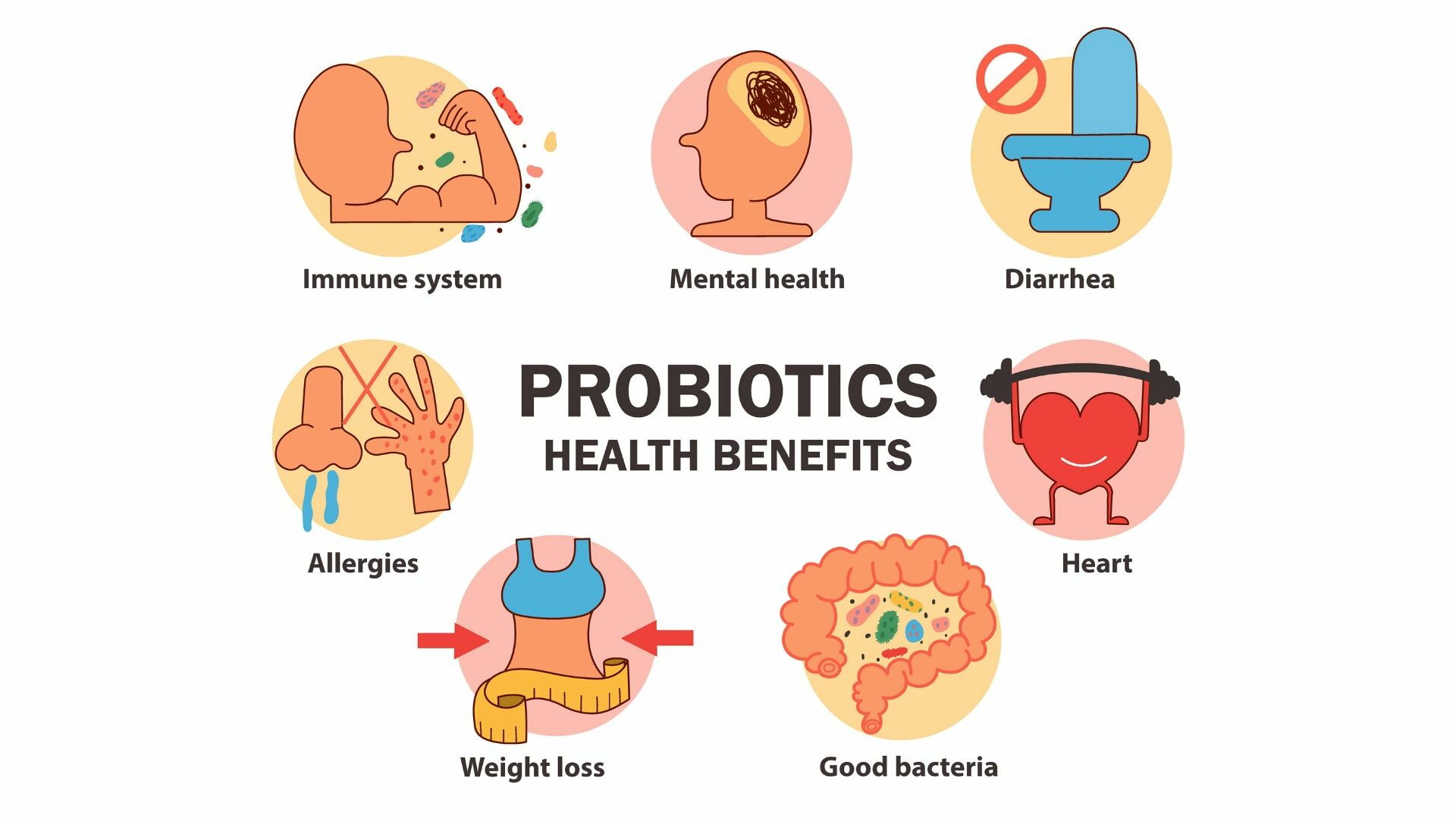The intestinal bacterial flora
In normal physiological conditions, our intestine is densely colonized by billions of more or less beneficial microorganisms that make up the entire intestinal bacterial flora (also called microbiota). Among these, the beneficial organisms that populate the intestinal flora perform some essential functions for health:
- counter the spread of pathogenic bacteria with which we come into contact through food or external agents,
- favor the absorption of nutrients,
- support the immune system complex,
- affect mood and psyche health.
Probiotics: what they are and what they are for

Protecting the balanced intestinal environment to allow the predominance of "good bacteria" is therefore essential for our psycho-physical health. Probiotics come into play in this field (from the Greek “pro-bios”, "in favor of life"), living and active microorganisms that assist the well-being of our intestinal flora and which can be found:
- In some foods, such as yogurt with added lactic ferments or in fermented foods (miso, sauerkraut, tempeh, kimchi, kefir, kombucha).
- In the form of supplements, very useful for those who have a slightly disordered diet or those who want to restore intestinal bacterial flora altered, for example, by antibiotic therapy or gastrointestinal infections
Despite the marketing of many products containing probiotics (not to be confused with prebiotics, which are non-digestible substances that stimulate the growth and activity of one or more species of bacteria useful for the development of probiotic microflora), it is not so easy to guarantee effective intake of these bacteria.
Foods that contain probiotics, in fact, often fail to effectively maintain the vitality of organisms over time, either because the probiotics have a rather short life (it can happen that, if they are not stored in an optimal way, they are already taken inactive / dead); you want because they are strains that cannot resist the passage through the acidic pH of the gastric juices of the stomach or the basic pH of the intestine.
If they manage to reach the intestine unharmed and do their duty, probiotics adhere to the intestinal walls and compete with the pathogenic bacteria present, they balance the intestinal bacterial flora and carry out a whole series of nutritional and defensive activities of which they are very strong promoters.
Probiotics for healthy colon and intestins
Among the many strains of probiotics on the market, there are two particularly effective for restoring the altered flora of the intestine of adults and children: Bacillus coagulans and Saccharomyces boulardii.
1. Bacillus Coagulans
It is a beneficial and very resistant bacterium also known as "Lactobacillus Sporogenes", since it has the particular ability to produce spores. They are "dormant" bacilli that remain in their protective shield waiting for the most favorable external conditions to be able to grow and reproduce. These probiotics can be stored at room temperature, where they will remain intact in their potential state thanks to the natural capsule that protects them from heat, from excessively acidic or basic pH and from the attack of gastric juices. The Bacillus Coagulans therefore arrive alive and well to the intestine, where they can germinate, reproduce and colonize the area already after about an hour from their intake, enriching the bacterial flora with new energies and defenses.
These probiotics are particularly valuable because:
- They relieve the symptoms of diarrhea (including neonatal), constipation, intestinal fermentation, inflammatory bowel disorders.
- They support the microbiota after antibiotic-based drug therapy.
- They help in case of colitis, diverticulitis, acute catarrhal enteritis, nonspecific vaginitis.
- They support the immune defenses.
The spores of Bacillus Coagulans, in addition to reaching areas where many of the other probiotics do not arrive, act along the entire gastrointestinal tract creating an environment conducive to the maintenance and growth of the other strains and, once they reach their destination, they have a high capacity to adhesion to the mucous membrane of the intestine. Bacillus Coagulans is also resistant to most antibiotics, making it possible to take them even during antibiotic therapies to counteract their side effects on the bacterial flora.
2. Saccharomyces boulardii
Saccharomyces boulardii is a non-pathogenic probiotic yeast whose effectiveness has been attested by a very large literature. Among the benefits it brings, the most important is:
- The action to combat diarrhea given by the continued use of antibiotics
The presence of a dense scientific literature in this regard has allowed Saccharomyces boulardii to be recommended by the European Society of Gastroenterology, Hepatology and Pediatric Nutrition (ESPGHAN) for the treatment of all types of acute diarrhea in children (Guarino et al, 2014) .
It is also recommended for other acute diseases such as:
- Infections (for example, from Clostridium difficile or Helicobacter pylori).
- Acute diarrhea of ??adults and children in cases of gastroenteritis / enterovirus.
- Enteral nutrition related diarrhea.
- In preventing and combating traveler's diarrhea.
The clinical efficacy of Saccharomyces boulardii was also evaluated in various types of chronic diseases, including Crohn's disease, irritable bowel syndrome, ulcerative colitis, giardiasis, amebic colitis, Blastocystis hominis infection and HIV-associated diarrhea (McFarland 2010; Kelesidis et al, 2012).
This probiotic survives very well at body temperature and resists the gastric environment and bile acids, remaining vital in the intestinal tract and reaching the intact colon (McFarland 2010), in which it acts as a supporter of the bacterial flora. It is the only probiotic naturally resistant to the attack of antibiotics: it is not inactivated by them and therefore can be taken simultaneously with antibiotic therapy (Graff et al, 2008).
Have you ever taken probiotics? What effects did you experience? Write it in the comments.
